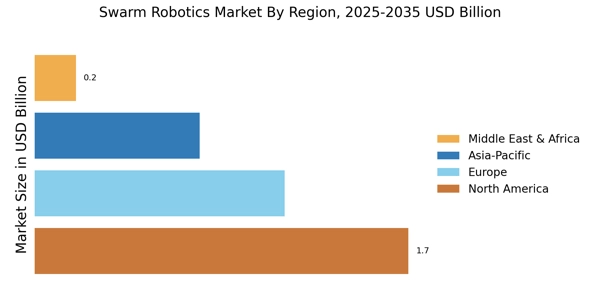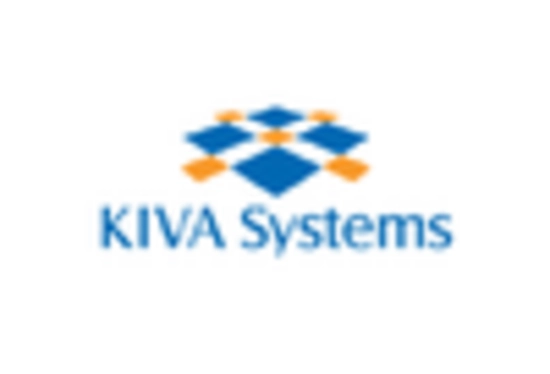Rising Demand for Automation
The Swarm Robotics Market is experiencing a notable surge in demand for automation across various sectors. Industries such as manufacturing, logistics, and agriculture are increasingly adopting swarm robotics to enhance operational efficiency and reduce labor costs. According to recent estimates, the automation market is projected to grow at a compound annual growth rate of over 20% in the coming years. This trend indicates a shift towards more automated processes, where swarm robotics can play a pivotal role in streamlining tasks. The ability of swarm robots to work collaboratively allows for improved productivity and flexibility, making them an attractive solution for businesses aiming to optimize their operations. As companies seek to remain competitive, the integration of swarm robotics into their workflows appears to be a strategic move that could redefine industry standards.
Technological Advancements in Robotics
Technological advancements are significantly influencing the Swarm Robotics Market, particularly in the areas of artificial intelligence and machine learning. These innovations enable swarm robots to operate with greater autonomy and efficiency, allowing them to perform complex tasks that were previously unattainable. For instance, the development of sophisticated algorithms facilitates real-time decision-making and coordination among multiple robots. This capability is crucial in applications such as search and rescue operations, where rapid response times are essential. Furthermore, the integration of advanced sensors and communication technologies enhances the operational range and effectiveness of swarm robotics. As these technologies continue to evolve, the potential applications for swarm robotics are likely to expand, driving further growth in the market.
Expansion of Applications Across Industries
The Swarm Robotics Market is witnessing an expansion of applications across diverse sectors, which is driving its growth. Industries such as agriculture, logistics, and healthcare are increasingly recognizing the potential of swarm robotics to enhance efficiency and effectiveness. In agriculture, for example, swarm robots can be utilized for precision farming, enabling farmers to monitor crop health and optimize resource usage. In logistics, swarm robotics can streamline warehouse operations by automating inventory management and order fulfillment. The healthcare sector is also exploring the use of swarm robotics for tasks such as patient monitoring and assistance. As more industries adopt swarm robotics, the market is likely to experience significant growth, reflecting the technology's adaptability and potential to transform traditional practices.
Growing Focus on Environmental Sustainability
The Swarm Robotics Market is increasingly aligned with the global emphasis on environmental sustainability. Swarm robotics offers innovative solutions for addressing environmental challenges, such as pollution monitoring, wildlife conservation, and disaster response. For instance, swarm robots can be deployed to monitor air and water quality, providing real-time data that is essential for informed decision-making. Additionally, their ability to operate in hazardous environments makes them ideal for tasks such as oil spill cleanup and habitat restoration. As awareness of environmental issues continues to rise, the demand for swarm robotics in sustainability initiatives is expected to grow. This trend not only highlights the versatility of swarm robotics but also positions the industry as a key player in the pursuit of sustainable development.
Increased Investment in Research and Development
Investment in research and development is a critical driver for the Swarm Robotics Market, as it fosters innovation and the creation of new applications. Governments and private entities are allocating substantial resources to explore the capabilities of swarm robotics in various fields, including defense, healthcare, and environmental monitoring. This influx of funding is expected to accelerate the development of cutting-edge technologies that enhance the functionality and efficiency of swarm robots. For example, recent funding initiatives have led to breakthroughs in swarm intelligence, enabling robots to adapt to dynamic environments. As R&D efforts intensify, the market is likely to witness the emergence of novel solutions that address complex challenges, thereby expanding the scope and impact of swarm robotics.

















Leave a Comment